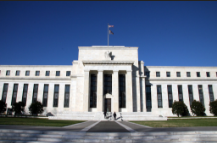Central bankers believe they can push people around are like pieces on a chessboard. Armed with theories, graphs, and equations, the monetary mandarins believe the world revolves in the palm of their hands. It hasn’t worked out that way.
On Milton Friedman’s 90th birthday, when he was simply Governor Ben S. Bernanke, the man who would become Fed chair and create more (supposedly) high-powered money than any head of the Fed in history famously told the audience and Friedman himself in closing,
Let me end my talk by abusing slightly my status as an official representative of the Federal Reserve. I would like to say to Milton and Anna: Regarding the Great Depression. You’re right, we did it. We’re very sorry. But thanks to you, we won’t do it again. (Bernanke, 2002)
Bernanke did indeed do it again and then some.
In their famous book A Monetary History of the United States Anna Schwartz and Friedman (1963) criticized the Fed for being too tight, putting the “Great” in Great Depression. However, Murray Rothbard explained in his book, America’s Great Depression, which ironically first appeared the very same year as A Monetary History, “The Federal Reserve tried its best to continue its favorite nostrum of inflation—pumping $268 million of new controlled reserves into the banking system (the main item: an increase of $305 million in bills discounted).” (2000: 262)
But as much as the Fed tried to inflate, people had other ideas, pulling cash out of the banking system to stymie central bankers. “Hence, the will of the public caused bank reserves to decline by $400 million in the latter half of 1931,” wrote Rothbard (2000: 262), “and the money supply, as a consequence, fell by over four billion dollars in the same period.”
After the crash in ‘29 the Fed lowered its rediscount rates from 4.5% at the beginning of 1930 to 1.5% in mid-1931. The rate was then raised to 3.5%. Economists criticized the central bank for being too tight. However, Rothbard points out (2000: 262) the Fed’s “policy was still inflationary on balance, since it still increased controlled reserves.” At the time the Fed was still constricted by the gold standard. More inflation “would have endangered the gold standard itself.”
Since the financial crash of 2008, the central bank with Ben Bernanke and now Janet Yellen has quadrupled its balance sheet but price inflation is stuck below their 2% benchmark. The PhDs are nonplussed, getting no bang, for 4.5 trillion bucks.
A couple of Fed employees toiling a long ways from the home office (St. Louis) believe they have the answer for the Fed balance sheet not providing the assumed stimulus. Economist Yi Wen and associate Maria A. Arias pop this question in their St. Louis Fed paper, “So why did the monetary base increase not cause a proportionate increase in either the general price level or (gross domestic product)?” (Wen and Arias, under “Declining Velocity”)
Could it be that people and especially businesses have cut back after the crash of 2008 and are doing the wise thing—saving money—no matter what perverse incentives the central bank puts in front of them? Yes, according to Wen and Arias: “The answer lies in the private sector’s dramatic increase in their willingness to hoard money instead of spend it. Such an unprecedented increase in money demand has slowed down the velocity of money.” (Wen and Arias, under “Declining Velocity”)
Keynesians at the central bank think people are just so many particles to be plugged into their models to determine what to set the fed funds rate to, or how much Q to stir into its QE. But when the researchers plugged numbers into MV=PQ, they admitted, “(I)nflation in the U.S. should have been about 31 percent per year between 2008 and 2013, when the money supply grew at an average pace of 33 percent per year and output grew at an average pace just below 2 percent.” (Wen and Arias, opening section)
While Bernanke was trying to keep his promise to Friedman, prices have been rising at less than two percent. And it’s deflation that central bankers continue to worry about. The reason is money velocity has plunged from over 17 times before the recession to 4.4 during the first half of 2014.
Consumers and firms have been gloomy since the financial crisis, according to Arias and Wen, who offer as one explanation: “the dramatic decrease in interest rates that has forced investors to readjust their portfolios toward liquid money and away from interest-bearing assets such as government bonds.” (Wen and Arias, under “Declining Velocity”)
This all makes sense praxeologically. Human action is purposeful to attain goals, making a person better off. This doesn’t mean people are always right. “All that praxeology asserts is that the individual actor adopts goals and believes, whether erroneously or correctly, that he can arrive at them by the employment of certain means,” explains Rothbard. (1997:59)
But after a devastating financial crash, leaving millions upside down on their primary asset—their home—and with much smaller retirement accounts, it makes perfect sense that post 2008, MV=PQ might not add up. Rothbard (1997:73)writes:
Econometrics not only attempts to ape the natural sciences by using complex heterogeneous historical facts as if they were repeatable homogeneous laboratory facts; it also squeezes the qualitative complexity of each event into a quantitative number and then compounds the fallacy by acting as if these quantitative relations remain constant in human history. In striking contrast to the physical sciences, which rest on the empirical discovery of quantitative constants, econometrics, as Mises repeatedly emphasized, has failed to discover a single constant in human history. And given the ever-changing conditions of human will, knowledge, and values and the differences among men, it is inconceivable that econometrics can ever do so.
The Fed leadership’s continued expansive monetary policy leads the two researchers in St. Louis Fed office to conclude,
In this regard, the unconventional monetary policy has reinforced the recession by stimulating the private sector’s money demand through pursuing an excessively low interest rate policy (i.e., the zero-interest rate policy). (Wen and Arias, under “Declining Velocity”)
Individuals act with a purpose, and they figured out that government bonds yielding zero are no better than money and are, in fact, riskier. Wen and Arias write, “the best form of risk-free liquid asset is no longer the short-term government bonds, but money.” (Wen and Arias, under “Declining Velocity”) So households are sitting on $2.15 trillion in savings—close to a 50% increase over the past five years—and banks have $2.8 trillion in reserves parked at the Fed.
While cash piles up, bankers are still saying no to loans. Professor Steve Hanke often makes a point Lord Keynes made in 1930, that central banks create “state money,” the high-powered variety, but the primary creator of money is the commercial banking system. Since the financial crisis, banks have been collectively timid.
At the end of 2007 commercial bank assets totaled just over $13 trillion. At the end of the first quarter of 2014, commercial bank assets were $14.9 trillion an annual increase of just 2.3%, a fraction of the growth in assets for the six year period previous. Assets were $6.5 trillion at year-end 2001 and doubled by year-end 2007, an annual increase of 16.7%.
In a piece entitled “Bernanke’s Monetary Mess” in Hanke (2014) wrote,
Since August 2008, the month before Lehman Brothers collapsed, the supply of state money has more than quadrupled, while bank money has shrunk by 12.1 percent — resulting in an anemic increase of only 4.5 percent in the total money supply (M4). The public is confused — as it should be. After all, the Fed has embraced contradictory monetary policies. On the one hand, when it comes to state money, the Fed has been ultra-loose. But, on the other hand, when it comes to the largest component of the money supply, bank money, a tight monetary stance has been embraced.
So the Fed, fixer of all it disrupts, is not so all powerful after all, prompting University of Chicago finance professor John H. Cochrane (2010) to mock,
The Fed is reduced to hoping that announcements will work; that merely saying “exceptionally low levels for the federal funds rate for an extended period” will prod people to push prices higher. Others such as the IMF’s chief economist Olivier Blanchard and several Fed governors have advocated that the Fed announce a higher inflation target. This is the WIN (“Whip Inflation Now”) strategy from the 1970s – tell them you want different rate of inflation and hope it happens. Speak loudly and hope they don’t notice you have no stick. But what do you do if it doesn’t happen? Make a bigger announcement?
Central bankers shouldn’t make promises they can’t keep. And followers of the Austrian school should remember what Austrian theory is built upon (individual action) and not overestimate the Fed’s power.
Originally appeared in the Journal of Prices & Markets
References
Bernanke, Ben S. 2002. Remarks by Governor Ben S. Bernanke
At the Conference to Honor Milton Friedman, University of Chicago, Chicago, Illinois
November 8, 2002. http://www.federalreserve.gov/boarddocs/Speeches/2002/20021108/default.htm
Cochrane, John H. 2010. “A Big Stick For the Fed” October 6 http://faculty.chicagobooth.edu/john.cochrane/research/papers/big_stick.html
FDIC Quarterly 2008, Volume 2, Number 1 https://www.fdic.gov/bank/analytical/quarterly/2008_vol2_1/quarterly_V2N1_Full.pdf
FDIC Quarterly 2014, Volume 8, Number 2
https://www.fdic.gov/bank/analytical/quarterly/2014_vol8_2/FDIC_Quarterly_Vol8No2.pdf
Hanke, Steve. 2014. “Bernanke’s Monetary Mess” Financial Sense: Applying Common Sense to the Markets January 22. http://www.financialsense.com/contributors/steve-hanke/bernanke-s-monetary-mess
Rothbard, Murray. 2000. America’s Great Depression, 5th Edition Ludwig von Mises Institute Auburn, Alabama
Rothbard, Murray. 1997. “Praxeology: The Methodology of Austrian Economics” in The Logic of Action One: Method, Money, and the Austrian School Cheltenham, UK: Edward Elgar, Vol. I pp. 58-77.
The FDIC Quarterly Banking Profile, First Quarter 2002. https://www2.fdic.gov/qbp/2002mar/qbp.pdf
Wen, Yi, and Arias, Maria A. 2014, “What Does Money Velocity Tell Us About Low Inflation in the U.S.?” St. Louis Fed “On the Economy” September 1. http://www.stlouisfed.org/on-the-economy/what-does-money-velocity-




